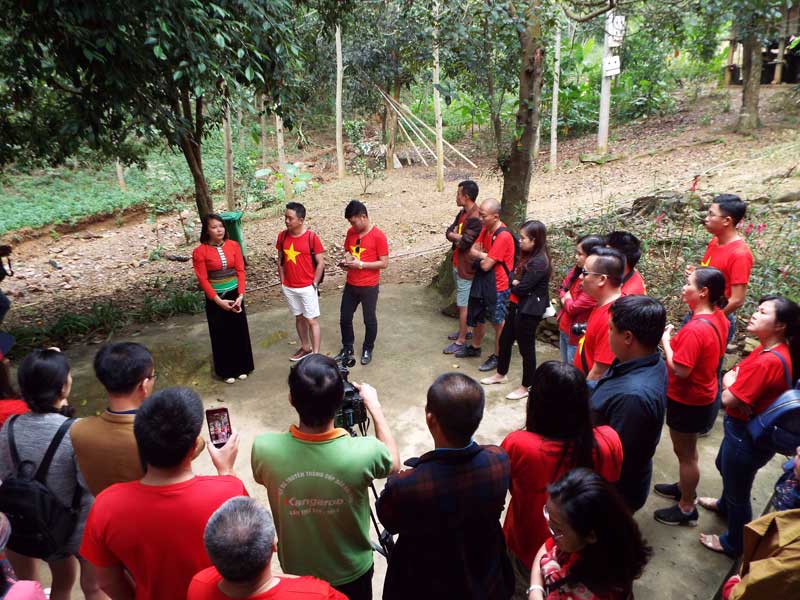
(HBO) – Following the Prime Minister’s approval of a plan to develop the Hoa Binh Lake tourism site, the Department of Culture, Sports and Tourism of Hoa Binh province has proposed the provincial Party Committee and People's Committee to build and implement a tourism human resources training plan which aims at creating sustainable livelihoods and improving living standards of people in the area.

A family in Da Bia hamlet, Tien Phong commune (Da Bac
district) offers tourism services for tourists.
Regarding households
living along the Hoa Binh Lake with potential for community-based tourism
development, the provincial Department of Culture, Sports and Tourism has
opened several classes, including one in Ngoi hamlet (Ngoi Hoa commune) and
another on the Coconut island (Thung Nai commune). In addition, the department
has run classes on developing tourism products and promoting destinations for
locals, most recently in Tien hamlet, Thung Nai commune. It has also organised
tours and trips to study tourism models in Vinh Phuc province, Moc Chau
district (Son La province), and Thai Nguyen province.
In the past, lakeside
hamlets mostly involved in agriculture, forestry and fishing. Now, many of
them, such as Ngoi hamlet (Ngoi Hoa commune), Ke hamlet (Hien Luong commune),
and Da Bia hamlet (Tien Phong commune) have moved to developing homestay
tourism services. Bui Thi Nhem, whose family offers homestay services in Da Bia
hamlet, Tien Phong commune, said that local households have been supported to
acquire basic tourism knowledge and skills, including customer services, service
quality management, communication and cooking skills. The hamlet has four
homestays, with the number of domestic and international visitors increasing significantly.
Community-based tourism activities are bringing about practical outcomes, both
improving living conditions and preserving cultural values./.
A diverse chain of eco-tourism and resort destinations concentrated in Hoa Binh city and the districts of Tan Lac, Da Bac, and Luong Son… Along with the launch of several key high-quality resort tourism projects, these developments have reshaped the landscape and enhanced the appeal of Hoa Binh as a travel destination.
Boasting diverse terrain, a mild climate, and rich natural resources, Cao Phong district is increasingly asserting its place on Vietnam’s tourism map, attracting both domestic and foreign visitors. The district is renowned for its stunning landscapes, majestic mountains, a crystal-clear hydropower lake, and the unique cultural identity of local ethnic groups.
With its pristine landscapes, unique cultural heritage of Muong ethnic minority, and an expanding range of visitor experiences, Tan Lac district of Hoa Binh has fast become a captivating destination for both domestic and international tourists.
Until now, Sung village in Cao Son commune, Da Bac district remains the only Dao ethnic community in Hoa Binh province to develop a community-based tourism model. Beyond its untouched natural landscapes, cultural identity serves as the cornerstone attraction for visitors.
Alongside the diverse cultural identities of the Kinh, Muong, Tay, Thai, Dao, and Mong ethnic people, Hoa Binh province is also renowned as the "capital" of the northwestern Vietnamese cuisine, offering unique and distinctive dishes. At festivals, during Lunar New Year (Tet), or on significant family or community occasions, special dishes are prepared, leaving a lasting impression on visitors.
A Phong Linh (Yellow Tabebuia) flower garden in Thang village, Thach Yen commune, Cao Phong district is currently in full bloom, drawing a large number of visitors.



